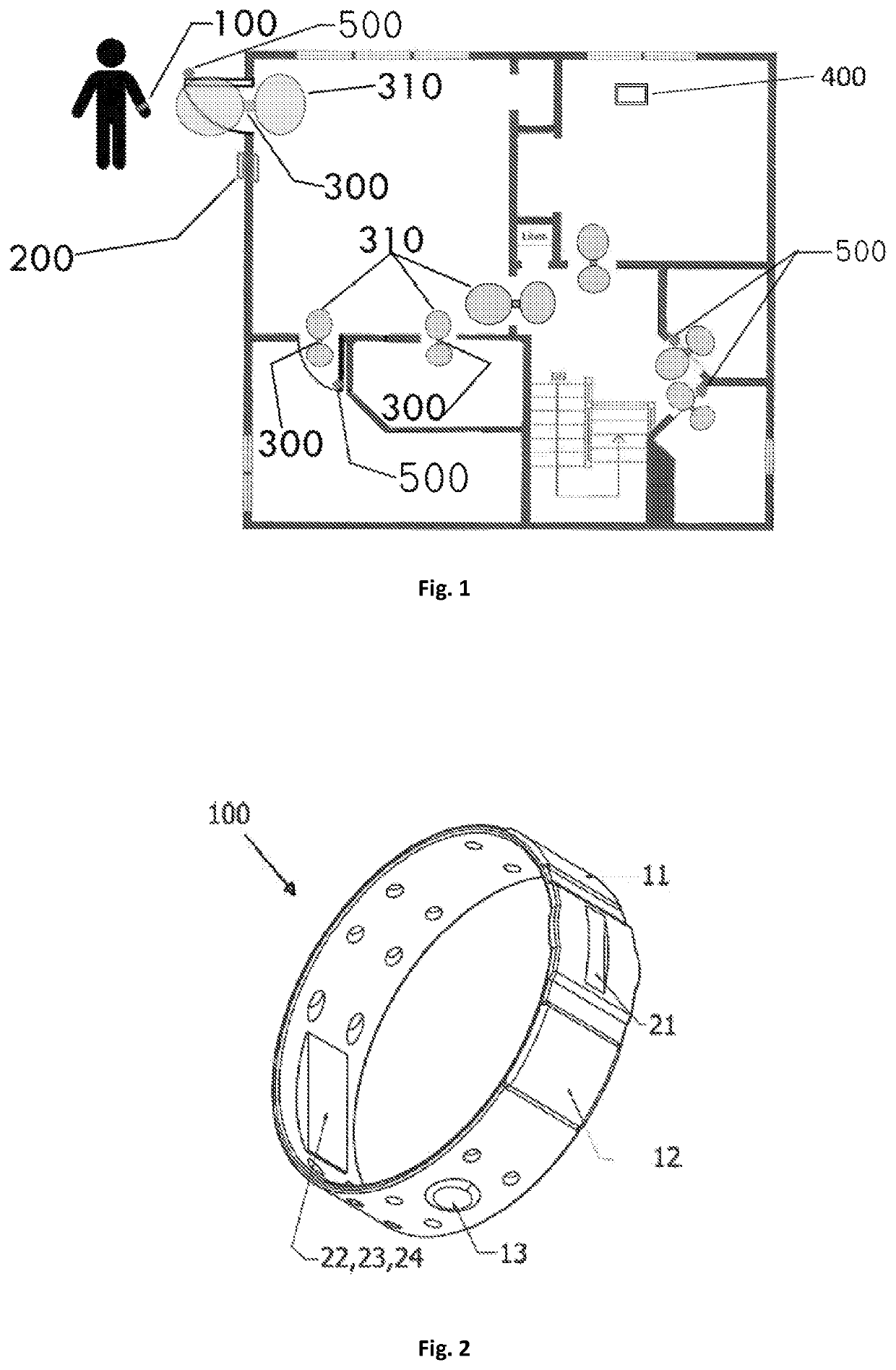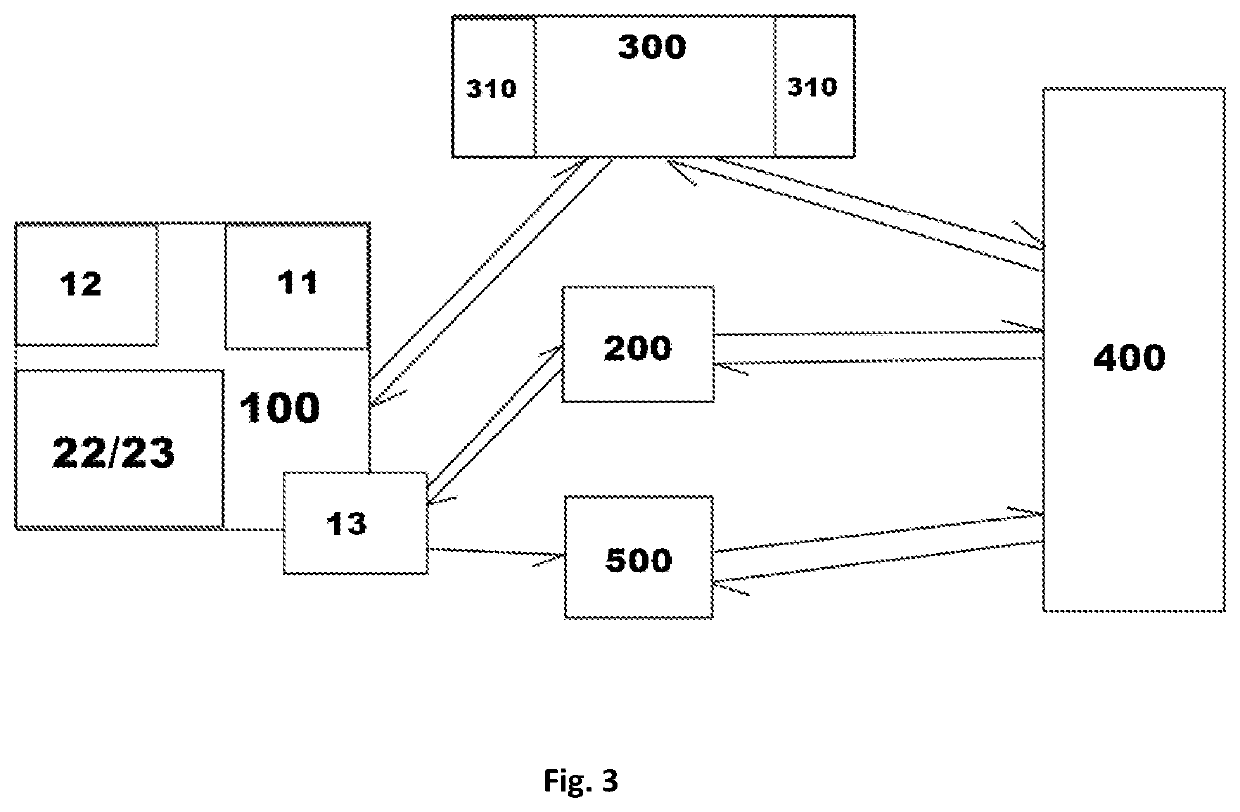System and method for supervising a person
a system and person technology, applied in the field of systems and methods for monitoring people, can solve the problems of health, safety and environment (hse) becoming a serious matter, high battery consumption, and further restrictions in certain areas of the working space, so as to improve user friendliness of such a system, reduce downtime and maintenance, and improve security
- Summary
- Abstract
- Description
- Claims
- Application Information
AI Technical Summary
Benefits of technology
Problems solved by technology
Method used
Image
Examples
Embodiment Construction
[0048]FIG. 1 shows a diagram of one embodiment of the invention, where the system is used for supervising a person in a working area. This person wears a mobile base 100 that is registered with this person. The mobile base 100 is a small, lightweight unit that is easy to attach to a person and it can be worn unattended. It is important that this mobile base 100 is fixed to the person to be monitored and not connected to clothing or equipment that is not permanently attached to the person.
[0049]The system further comprises a controller 400 for supervising the person wearing the mobile base. The mobile base 100 comprises a first radio frequency tag 11 (not shown in FIG. 1) that is prepared for being triangulated or positioned for deciding a position of the tag, which is worn by the user. The first radio frequency tag can preferably be a high frequency tag, such as a Bluetooth tag, to effectively be able to transmit data within the necessary range. Bluetooth Low Energy (BLE) may prefer...
PUM
 Login to View More
Login to View More Abstract
Description
Claims
Application Information
 Login to View More
Login to View More - R&D
- Intellectual Property
- Life Sciences
- Materials
- Tech Scout
- Unparalleled Data Quality
- Higher Quality Content
- 60% Fewer Hallucinations
Browse by: Latest US Patents, China's latest patents, Technical Efficacy Thesaurus, Application Domain, Technology Topic, Popular Technical Reports.
© 2025 PatSnap. All rights reserved.Legal|Privacy policy|Modern Slavery Act Transparency Statement|Sitemap|About US| Contact US: help@patsnap.com


